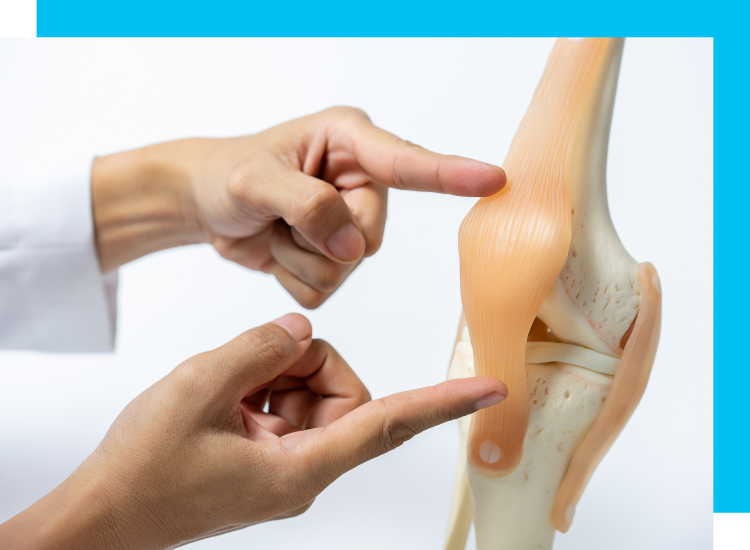
Imagine standing at a crossroads, where two distinct surgery paths lay before you:
- Arthroscopic surgery- A less invasive surgery offering swift mend.
- Traditional yet essential for more complex fixes.
To choose wisely between these options, a clear grasp of their differences is vital for the best outcome for your health.
Understanding Arthroscopic Surgery- A Minimally Invasive Approach
Arthroscopy and sports medicine are a modern solutions to joint problems. With the help of a tiny camera named an arthroscope, surgeons peer into the joint via small cuts, displaying live images on a screen. This method shines for sports-related harm repair.
The rise of arthroscopy owes much to tech progress, making it a go-to for many seeking treatment in India. As you ponder arthroscopy, salute the medical strides bringing this option to your doorstep, paving the way for a rapid return to comfort.
Key Benefits of Arthroscopic Surgery for Patients
Consider arthroscopic surgery, a less invasive choice, for a smoother and speedier mend. It stands out with several benefits:
- Less blood lost during the procedure
- Quickened recovery, a boon for athletes or those reliant on physical work
- Fewer infections and reduced pain after the operation
Yet, full knowledge of this surgery, including any limits that might sway your choice, is critical.
Considerations and Limitations of Arthroscopic Surgery
Arthroscopic surgery, while laden with advantages, does have its bounds and risks. Here is what to remember:
- Minor incisions can make severe damage tough to tackle.
- Not ideal for all serious injuries requiring extensive repair.
- For some cases, open surgery could be the suggested path for better access and sight.
Grasping these limits is key in weighing your treatment options, open surgery included.
Exploring Open Surgery- a Traditional Surgical Approach
In the realm of surgery, open surgery is a classic method that entails a larger cut to directly reach the joint. It grants your surgeon a full, unaided view of the harm. It is vital for severe shoulder issues and those with serious joint changes needing precise and all-encompassing sight.
Open surgery’s broader incision means a wider range of procedures is possible, like fixing heavily damaged joints or fitting big prosthetic pieces. In cases of elaborate joint harm, this method's benefits shine, offering your surgeon the space and view needed for optimal operation. As you mull over your options, note that open surgery remains pivotal for musculoskeletal care, especially for intricate cases that demand a thorough technique.
Advantages of Open Surgery in Complex Cases
Facing severe joint damage or fracture? Open surgery often becomes the go-to solution. The unblocked view from the larger cut is vital for intricate cases. The extra room also allows for complex tasks, such as fitting replacements, to ensure precise placement and alignment of artificial parts. These benefits make open surgery fitting for serious joint harms and breaks, where precision and a full approach are key.
Also Read : Your Recovery Journey After Knee Arthroscopy Surgery
Scenarios Where Open Surgery is the Preferred Method
Open surgery is the top pick for some musculoskeletal issues. Its larger incision offers your surgeon a clear look at the joint or area. This visibility is critical for certain complex tasks such as:
- Total joint replacements involving prosthetic parts.
- Detailed surgeries with significant rebuilding.
- Severe joint harms or breaks needing a full check.
These cases underline the need for a surgical method that fits your specific health needs.

Comparing Arthroscopic & Open Surgery - Key Differences
When considering surgery options, consider how arthroscopic and open surgery stack up. Arthroscopy is known for tiny incisions and using an arthroscope, leading to minimal scars and possibly faster healing. Open surgery needs a larger cut and is often the choice for complex cases, like serious joint issues or fitting prosthetic materials.
Your choice between arthroscopic and open surgery hinges on factors like your condition's complexity, the operation needed, and your surgeon's skill. Arthroscopy often suits less serious harms or joint swelling, while open surgery is better for total joint replacements or severe breaks.
In choosing your surgery path, aim for the best long-term results. Your healthcare team will help, considering key differences like cut size and healing time, to find the right treatment for you.
Incision Size and Recovery Time in Surgery Comparison
When facing surgery, consider the incision size and recovery time. These impact your healing and the lasting marks of the operation.
The small cuts in arthroscopy aid in a faster mend. With this method, you can expect less pain swelling, and a swift return to daily life.
Open surgery, however, may leave more visible marks. The larger wounds need more time to heal, and the mend is often longer. More pain after the operation and a delayed return to regular life are also possible.
Understanding these differences helps you make an informed decision with your healthcare provider about the surgical method that best suits your needs.
Weighing Your Surgical Options to Make Informed Decisions
Your journey to recovery is guided by choices made with your healthcare team. Whether it is the precision of arthroscopic surgery or the broad reach of open surgery, each has its perks for certain health issues. Reflect on the shared insights, talk with the best orthopedist in Chennai, and know that whichever path you choose, top-notch healthcare awaits.
Expert healthcare awaits. You as you embark on your path to regaining your well-being.
